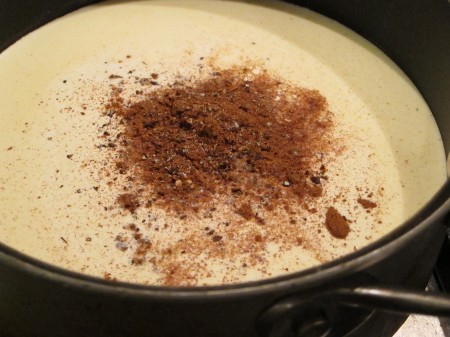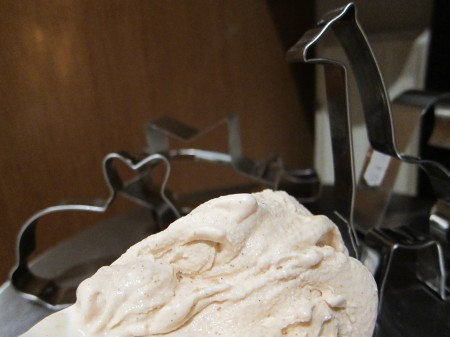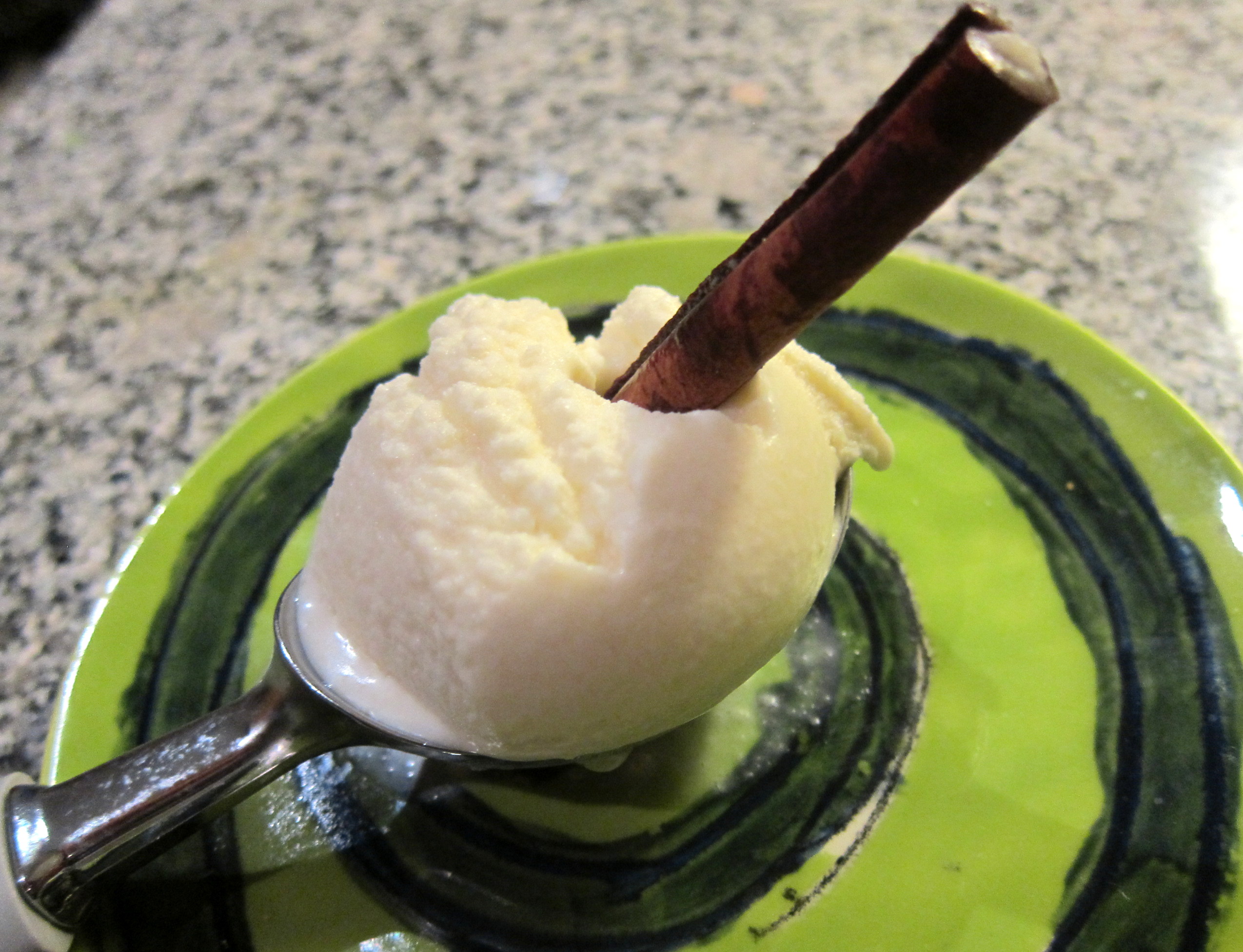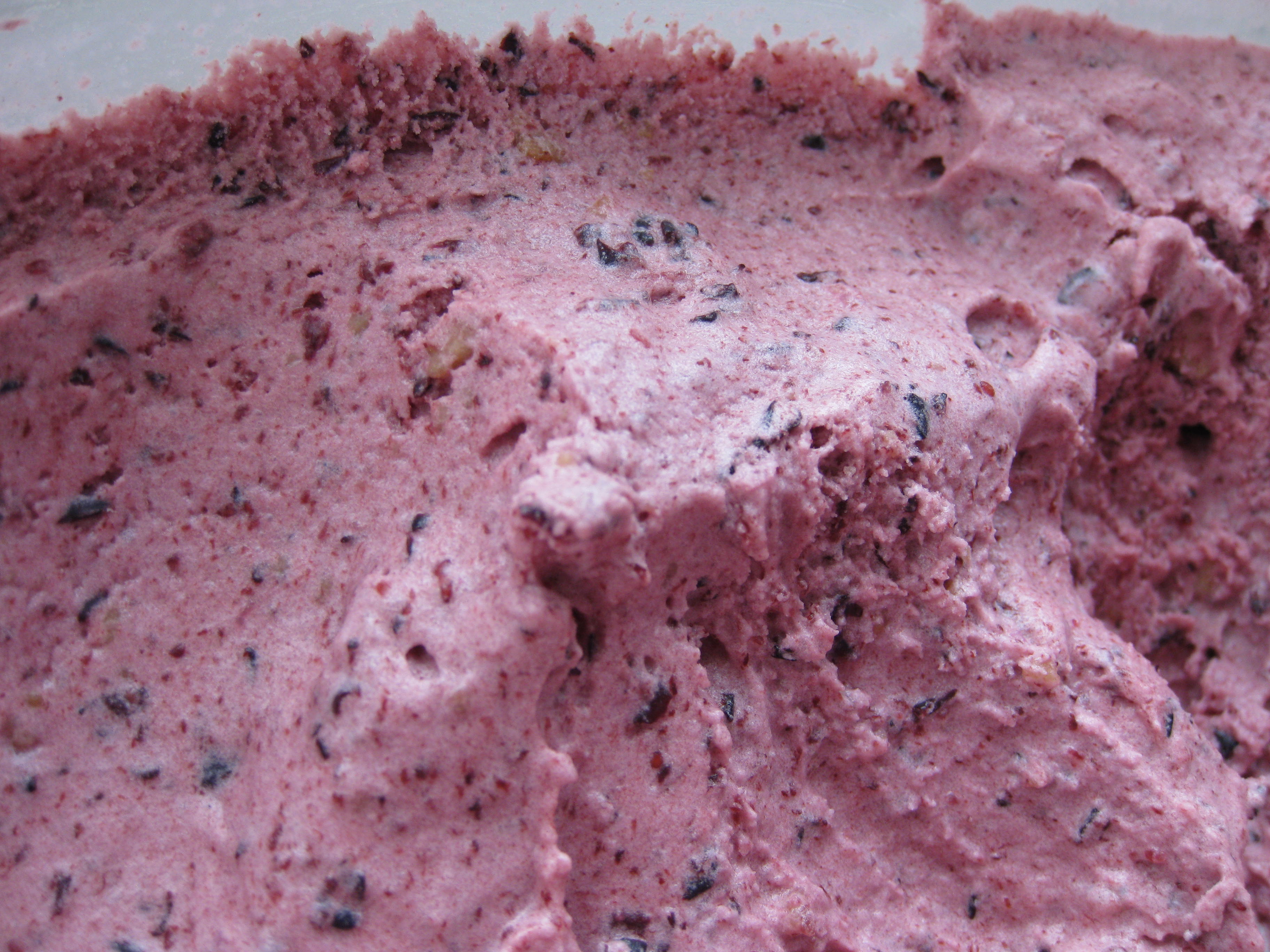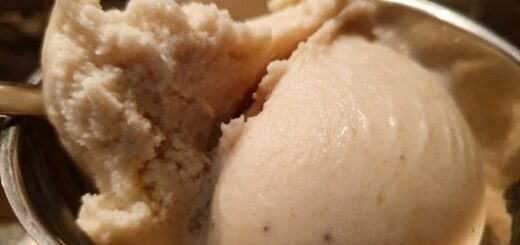Gingerbread ice cream (no cookies required!)
No time to bake gingerbread cookies? Do not despair – you can actually make gingerbread ice cream without cookies! The trick: flavour a neutral ice cream base with spices typically used when making the cookies – cloves, cardamom, cinnamon and ginger!
Gingerbread cookies (also known as ginger biscuits/ginger snaps) truly classify as one of the best ice cream add-ins I know of (look here for a smashing recipe based on cookies!). But sometimes, you just don’t have any gingerbread cookies available, or you might prefer a no-cookies version because you prefer smooth ice cream without solid add-ins. Or perhaps you are like me – simply curious to see how it would work out;-).
Allegedly, the recipe (here very slightly adapted) comes from the Swedish restaurant “Tyrol“, since decades a veritable entertainment establishment in Stockholm.
The making of the ice cream is pretty straightforward, if you are used to making custard-based ice cream (see this link for more details on this). As always when dealing with ice cream bases cooked on the stove with eggs, be careful. You do not want to end up with scrambled eggs in your custard – constant stirring with a spatula, in combination with a thermometer should help you out.
The original recipe calls for the “traditional” initial separate treatment of the sugar and eggs (then to be gradually mixed together with the warm dairy mixture during the “tempering phase”). As has been noted elsewhere, some consider that this tempering actually is unnecessary, and that all the ingredients (dairy as well as the eggs) might as well combined in the saucepan from the very beginning. I leave it to your choice which of these schools you would like to follow (I’ve had good results with both!).
Once the ice cream base has reached the required temperature, it should be cooled down as fast as possible. Water baths, ice baths, making use of cold exteriors … use whatever means you may have! When cool enough for the fridge, the base should then be chilled further, at least for a few hours and preferably over night (in order to further develop the flavours and the final consistency of the ice cream).
The final result clearly delivers the right gingerbread flavour vibes! Friends have been commending this ice cream, and it is certainly a nice, spicy experience (not in the hot sense, though), bound to make you and your loved ones happy and kind – just like gingerbread is supposed to:-)
- 400 ml (1.7 cups) cream
- 400 ml (1.7 cups) milk
- 1½ teaspoon ground cinnamon
- ⅔ teaspoon ground clove
- ⅔ teaspoon ground cardamom
- ⅓ teaspoon ground (dried) ginger
- 1½ tablespoons dark syrup
- 2 egg yolks
- 2 eggs
- 150 ml (0.6 cup) sugar
- If you follow the "no tempering of eggs-required" philosophy, simply put all ingredients together in a saucepan, blend thoroughly and then - while stirring constantly with a spatula, bring the mixture up to about 82-85 degrees Celsius (179-185 º F). Some would settle already for a temperature in the region of 77-82 degrees (170 -179 º F), something which mainly depends on how thoroughly you want to pasteurise your ice cream base). If you do not have a thermometer, the rule of thumb according to the "Spoon-test". Now jump forward to instruction number 6 below!
- The following next steps are for those who prefer the traditional method (used in the original recipe): Put together and warm all ingredients except for the sugar and the eggs and egg-yolks, in a saucepan. Bring close to a boil (without letting it boil) and set aside to cool down a little.
- In a separate bowl, whisk together the sugar, the eggs and the egg yolks.
- Little by little, and while constantly whisking, carefully begin to add the warm dairy/spice mixture to the sugar/eggs mix.
- When all is mixed together, return the ice cream base to the sauce pan. On low-medium heat, and while constantly stirring with a spatula, bring the mixture up to about 82-85 degrees Celsius (179-185 º F). Some would settle already for a temperature in the region of 77-82 degrees(170 -179 º F), something which mainly depends on how thoroughly you want to pasteurise your ice cream base). If you do not have a thermometer, the rule of thumb according to the "Spoon-test" will be when you can trace a line on the back of the spoon that stays.
- Cool down the ice cream base as quickly as possible. When cool, put the base in the refrigerator to chill, preferably over night and at least for a few hours.
- When thoroughly chilled, pour the ice cream base into your ice cream machine and churn according to its instructions.
- When churned, put the ice cream in a freezer-proof container, cover with plastic film, put on a lid and set to freeze in your freezer (unless you want to eat the ice cream immediately;-)

